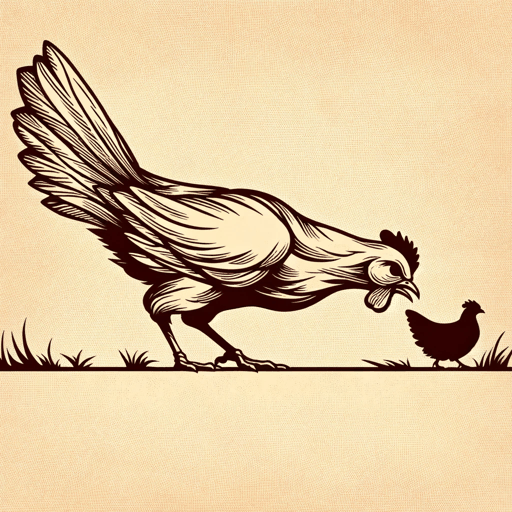16 pages • 32 minutes read
Margaret AtwoodThe Landlady
Fiction | Poem | Adult | Published in 1968A modern alternative to SparkNotes and CliffsNotes, SuperSummary offers high-quality Study Guides with detailed chapter summaries and analysis of major themes, characters, and more.
Symbols & Motifs
Sound
Sound is a key motif in Atwood’s poem. Five of the poem’s seven stanzas reference sound in some way (Stanzas 1, 2, 4, 5, and 7). Of the six references to sound, five are related to the landlady. The speaker describes “raw voice” (Line 3) as personifying the landlady, contributing to the “continuous henyard squabble” (Lines 5-6) in the rooms below. The landlady’s voice is so salient to the speaker that they indicate the woman is embodied by the voice, “She is a raw voice” (Lines 2-3), rather than saying she simply has a raw voice. This adds to the feeling of the landlady’s omnipresence as she travels, disembodied as just a voice, through the house. A rich soundscape is built up throughout the poem, as blood “bickers” (Line 8) and the landlady “slams […] days like doors” (Line 15). The cacophony of sounds are continuous, and the author now contributes when she wakes up shouting (Line 23). Finally, the landlady is a “raucous fact” (Line 30). Through the sustained use of aural vocabulary, Atwood places the reader in the midst of the poem, allowing them to experience the auditory stimuli with the tenant.
Related Titles
By Margaret Atwood

Alias Grace
Margaret Atwood

Backdrop Addresses Cowboy
Margaret Atwood

Cat's Eye
Margaret Atwood

Death By Landscape
Margaret Atwood

Hag-Seed: William Shakespeare's The Tempest Retold
Margaret Atwood

Happy Endings
Margaret Atwood

Helen of Troy Does Countertop Dancing
Margaret Atwood

Lady Oracle
Margaret Atwood

Life Before Man
Margaret Atwood

MaddAddam
Margaret Atwood

Oryx and Crake
Margaret Atwood

Rape Fantasies
Margaret Atwood

Siren Song
Margaret Atwood

Stone Mattress
Margaret Atwood

Surfacing
Margaret Atwood

The Blind Assassin
Margaret Atwood

The Circle Game
Margaret Atwood

The Edible Woman
Margaret Atwood

The Handmaid's Tale
Margaret Atwood

The Heart Goes Last
Margaret Atwood

